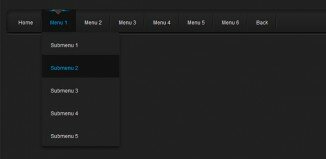Definition and Usage
The nav-left property specifies where to navigate when using the arrow-left navigation key.
| Name: | nav-up, nav-right, nav-down, nav-left |
|---|---|
| Value: | auto | <id> [ current | root | <target-name> ]? | inherit |
| Initial: | auto |
| Applies to: | all enabled elements |
| Inherited: | no |
| Percentages: | N/A |
| Media: | interactive |
| Computed value: | as specified |
Syntax
nav-left: auto|id|target-name|inherit;
Values
- auto
- The user agent automatically determines which element to navigate the focus to in response to directional navigational input.
- <id>
-
The <id> value consists of a '
#If the <id> refers to the currently focused element, the directional navigation input respective to the nav- property is ignored — there is no need to refocus the same element.
- <target-name>
- The <target-name> parameter indicates the target frame for the focus navigation. It is a string and it cannot start with the underscore "_" character. If the specified target frame does not exist, the parameter will be treated as the keyword '
current', which means to simply use the frame that the element is in. The keyword 'root' indicates that the user agent should target the full window.
Examples
button { position:absolute }
button#b1 {
top:0; left:50%;
nav-index:1;
nav-right:#b2; nav-left:#b4;
nav-down:#b2; nav-up:#b4;
}
button#b2 {
top:50%; left:100%;
nav-index:2;
nav-right:#b3; nav-left:#b1;
nav-down:#b3; nav-up:#b1;
}
button#b3 {
top:100%; left:50%;
nav-index:3;
nav-right:#b4; nav-left:#b2;
nav-down:#b4; nav-up:#b2;
}
button#b4 {
top:50%; left:0;
nav-index:4;
nav-right:#b1; nav-left:#b3;
nav-down:#b1; nav-up:#b3;
}





